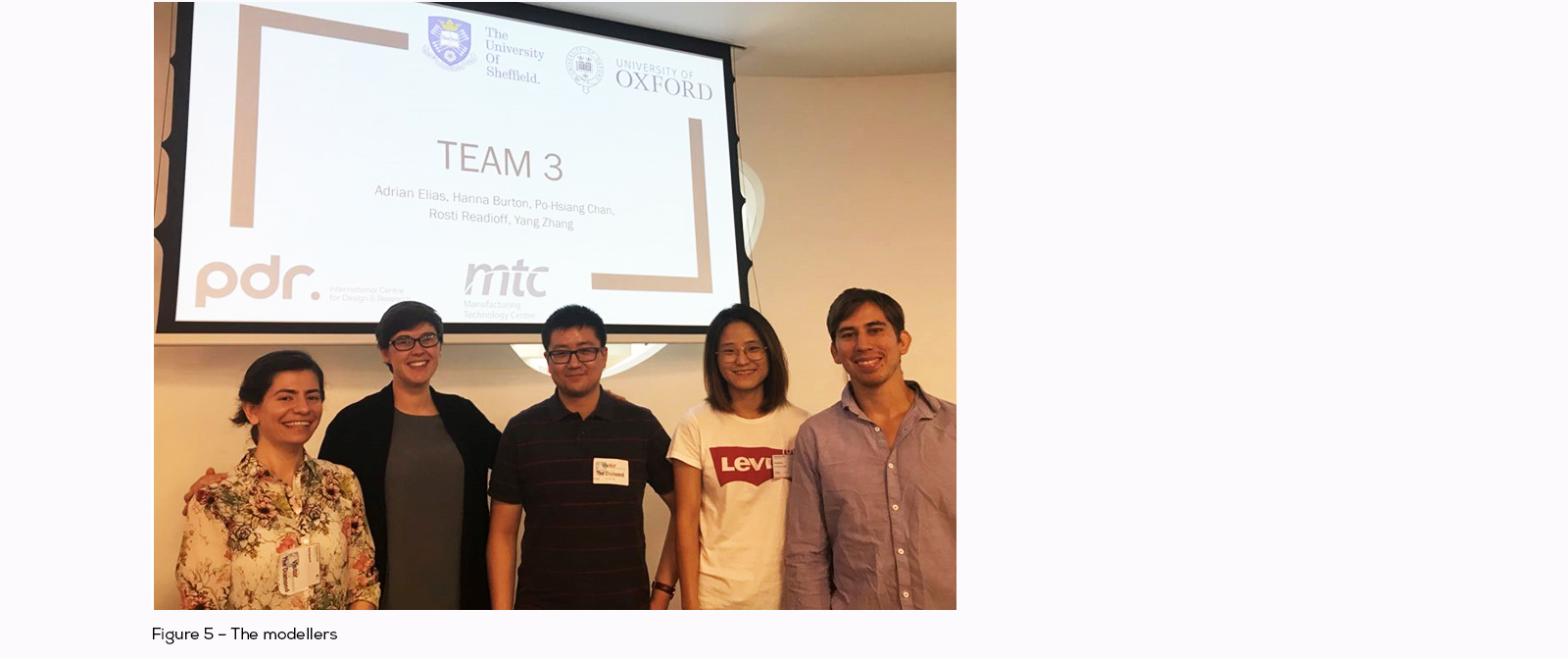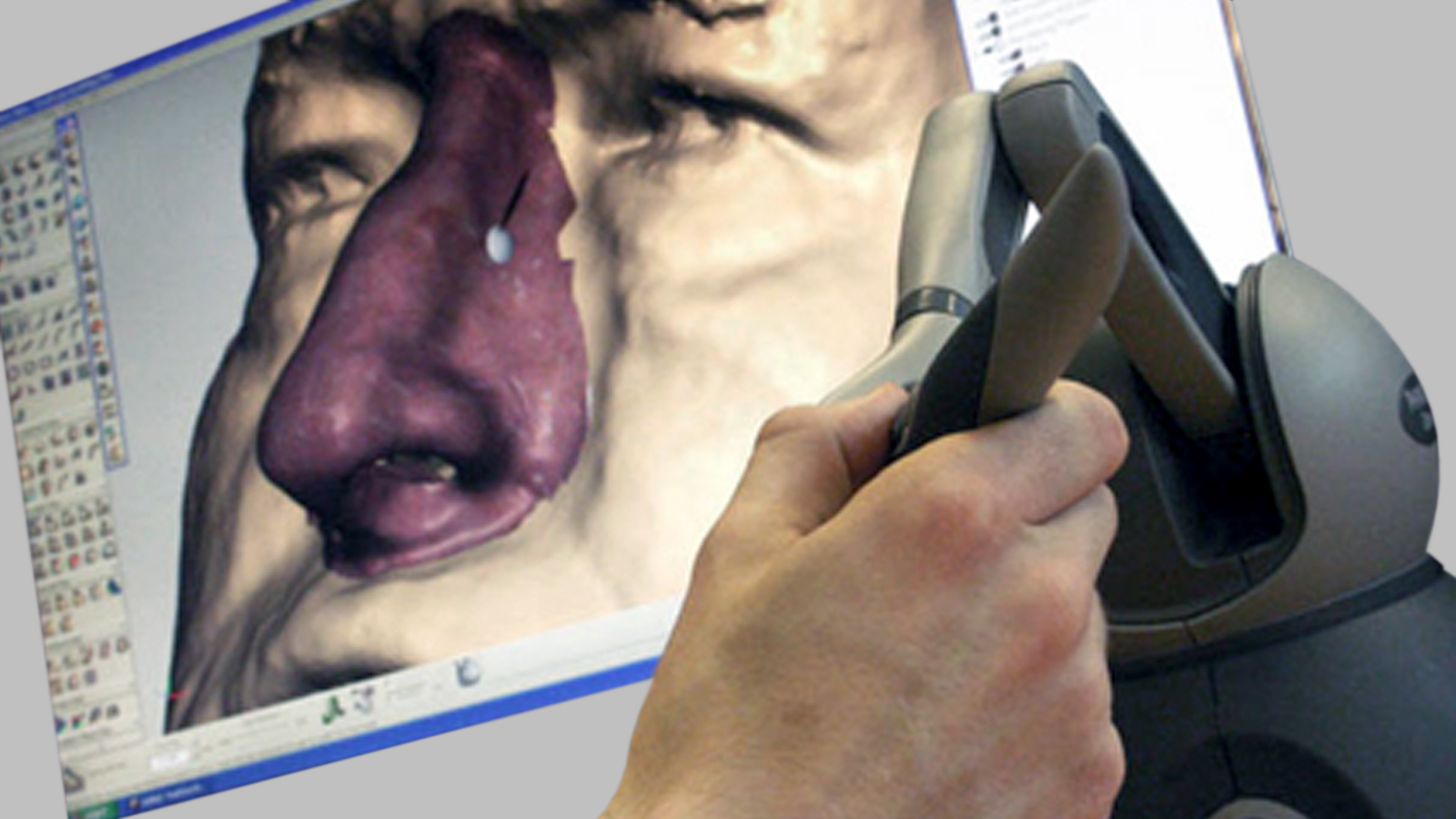Modelling... but not on the Catwalk
What were you up to last week?”
“I was at a modelling competition.”
An awkward silence follows and then I remember, the word modelling has a different meaning to me.
Modelathon 2018 was organised by INSGNEO (Institute for in silico Medicine) at the University of Sheffield and was funded by the EPSRC projects MultiSim and OATech+. The theme for this year was Using multi-scale modelling for new treatments of osteoarthritic joints. Osteoarthritis causes joints to become painful and stiff as the cartilage at the end of bones breaks down.
The challenge was split into three main areas: create a musculoskeletal model of a patient with normal walking gait; create a finite element model of a femur with a cartilage layer, and predict the bone remodelling of cartilage from a healthy to osteoarthritic state. Elements from each of these challenges were to be combined to create a multiscale hypermodel, which could be used to predict the effectiveness of different treatment types for an osteoarthritic hip.
Musculoskeletal models allow us to visualise human movement (Figure 1). Markers are placed on a patient which are registered to anatomic features. The motion of the markers are tracked while the patient walks, and the forces within muscles can be calculated from the change in marker position using a computational model.
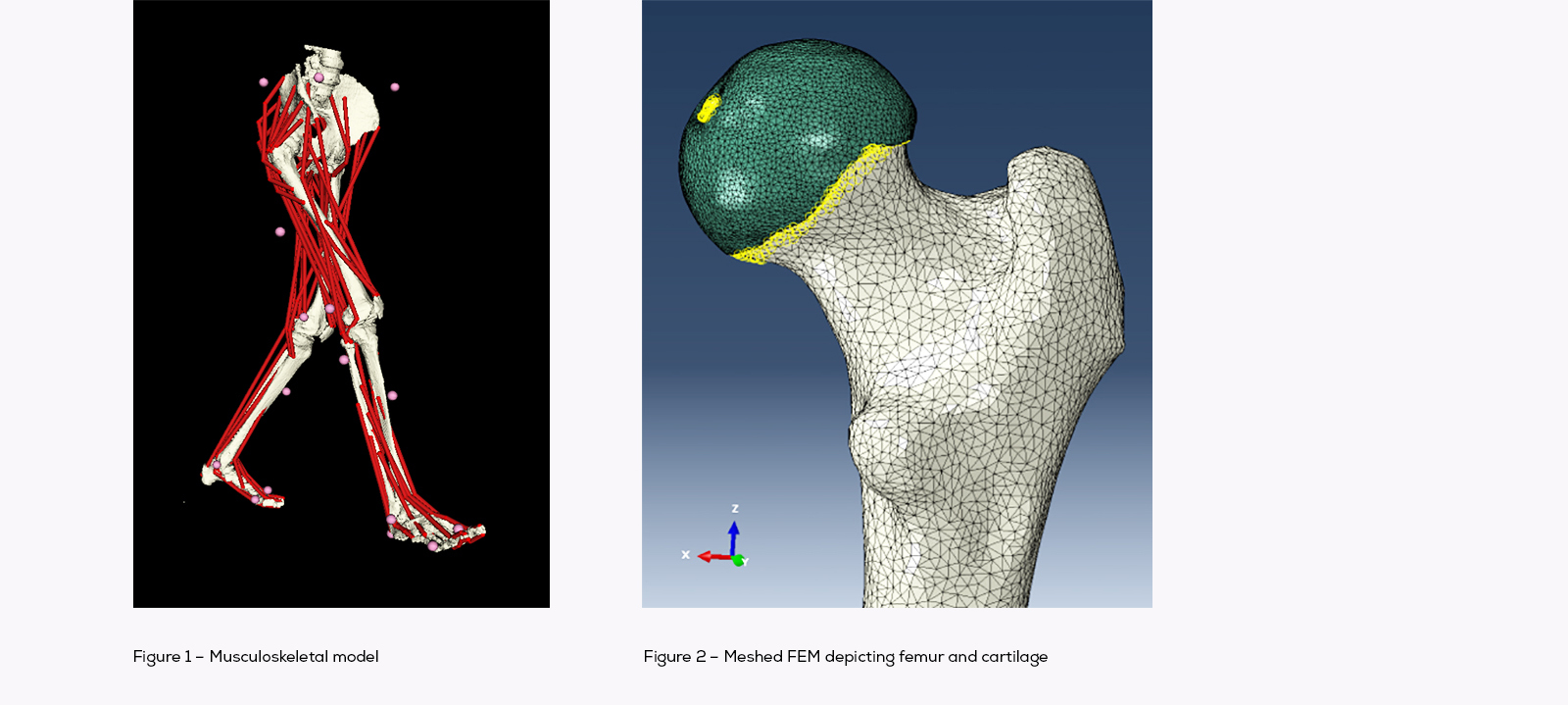
Bone remodelling was simulated over time and included some of the different layers which form cartilage. This model enabled us to study the degenerative effect of cartilage due to osteoarthritis (Figure 3).
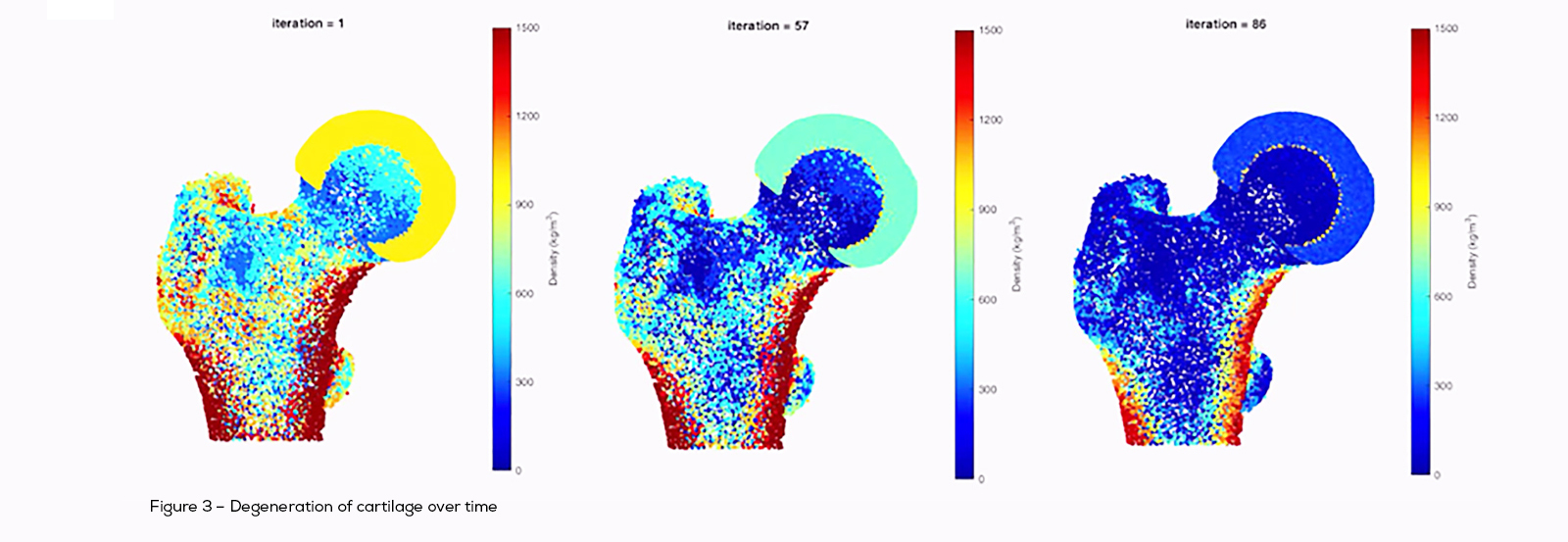
We combined the results from our three models, and generated an osteoarthritic hip model using a combination of musculoskeletal gait and multiscale data of the cartilage. This hypermodel provided us with the opportunity to assess the effectiveness of treatments for osteoarthritis of the hip, for example by total hip replacement (Figure 4).
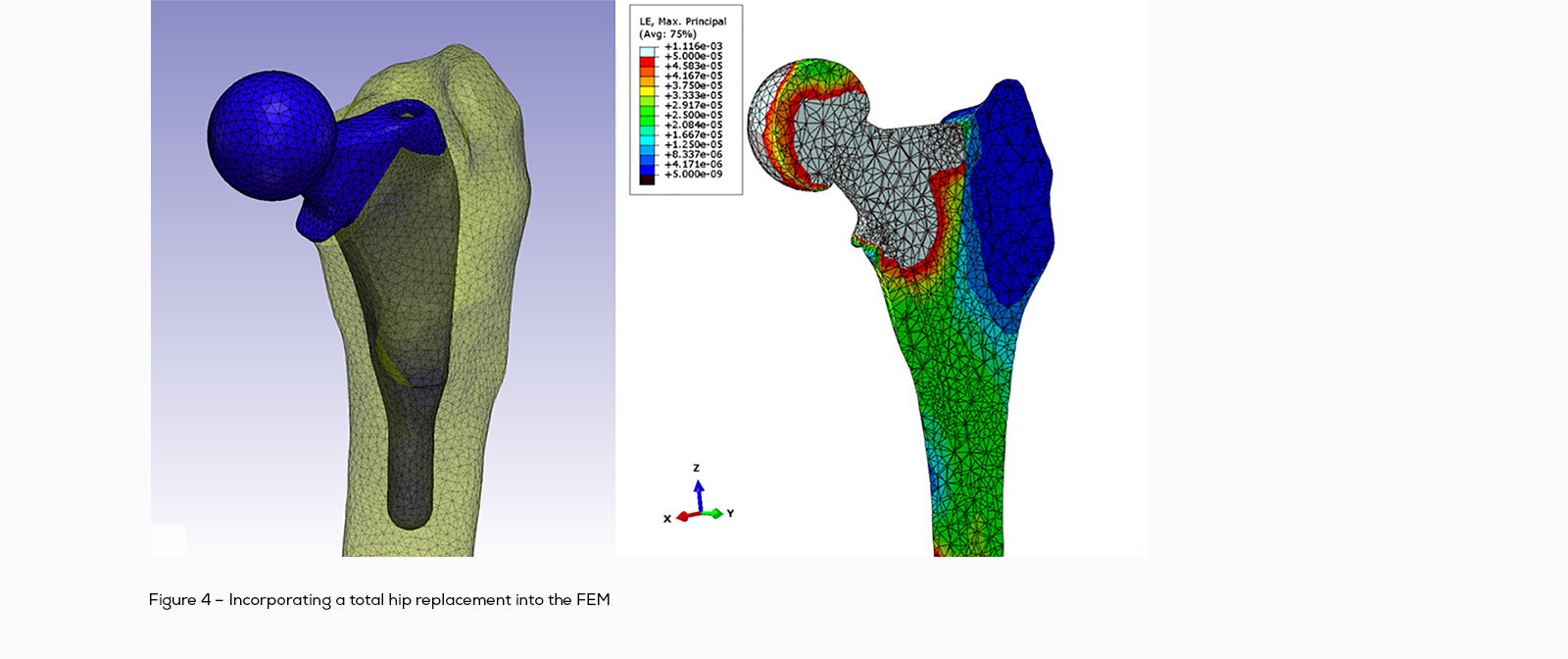
The workshop ran for 4 days, with modelling continuing into the early hours!
On the final day each team presented their findings. It was a good opportunity to see how other groups had tackled integrating the models. The whole experience was valuable, as I worked with individuals from the University of Sheffield, Oxford, and the Manufacturing Technology Centre (Figure 5) – each person’s background gave a unique insight as to how the model could be developed.
Ensuring that your own contribution of work could be incorporated into the group’s final model was a lot of pressure, but through good team work and communication we were able to create a successful multiscale model that met the aim of the workshop.
